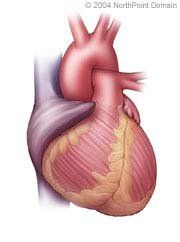Venous Disease
Basic Facts
- The body's network of veins, the blood vessels that return blood low in oxygen to the heart, is called the venous system.
- Venous disease can change the appearance of the skin on a person's arms or legs and can also cause skin ulcers (sores), limb discomfort, and swelling. Serious forms of venous disease can cause blood clots that can block blood flow.
- Serious forms of venous disease can cause blood clots that can block blood flow in the veins. These clots can break off and travel through the veins to the lungs.
- Common types of venous disease include varicose veins, superficial thrombophlebitis, chronic venous insufficiency, and deep vein thrombosis.

Venous diseases are problems or conditions with the body's veins. Problems affecting veins occur because of inflammation, blood clots, obstruction, or stretching. There are four types of venous diseases:
- Deep vein thrombosis (DVT);
- Chronic venous insufficiency;
- Superficial thrombophlebitis (also called phlebitis); and
- Varicose veins.
WHAT ARE THE SYMPTOMS?
DVT. Many people with DVT have no symptoms. Symptoms that occur may include a painful or swollen leg or a swollen ankle. If a blood clot caused by DVT breaks free, it may travel to a patient's lungs, called pulmonary embolism. Symptoms of pulmonary embolism may include:
- Chest pain;
- Shortness of breath;
- Painful breathing;
- Cough; or
- Fever.
- Swelling;
- Reddish-brown skin discoloration near the ankle; and
- Skin ulcers.
- Sudden swelling of the leg;
- Redness of the leg; and
- Slight fever.
DIAGNOSIS
DVT. To diagnose DVT, a physician may order one or more of the following:
- Ultrasound;
- Venogram; or
- MRI.
Superficial thrombophlebitis. This condition is usually diagnosed by the hardness of a vein felt on physical manipulation of the leg.
Varicose veins. Varicose veins are diagnosed by physical manipulation of the leg and, in some cases, an ultrasound.
TREATMENT APPROACH
DVT. A physician may prescribe thrombolytic drugs to dissolve blood clots. To prevent pulmonary embolism, a physician may insert a vena cava filter to catch a blood clot before it reaches the heart or lungs.
Chronic venous insufficiency. A physician may prescribe compression stockings and recommend that the patient sleep with his or her feet elevated above the heart. In severe cases, a physician may recommend a valvuloplasty.
Superficial thrombophlebitis. Phlebitis usually improves without treatment over the course of one week. A physician may prescribe an anti-inflammatory to ease pain.
Varicose veins. Treatments for varicose veins include sclerotherapy or vein removal or stripping.
Copyright © 2017 NorthPoint Domain, Inc. All rights reserved.
This material cannot be reproduced in digital or printed form without the express consent of NorthPoint Domain, Inc. Unauthorized copying or distribution of NorthPoint Domain's Content is an infringement of the copyright holder's rights.
